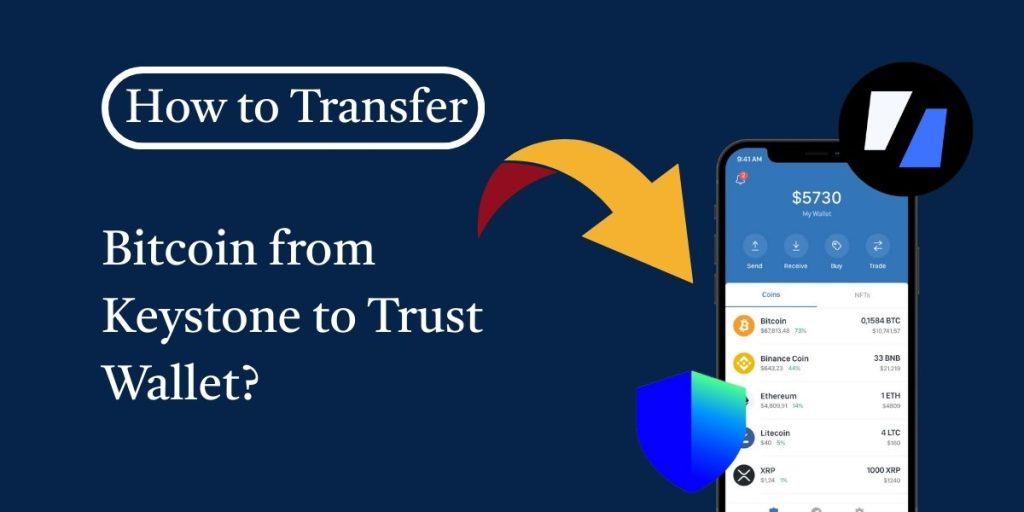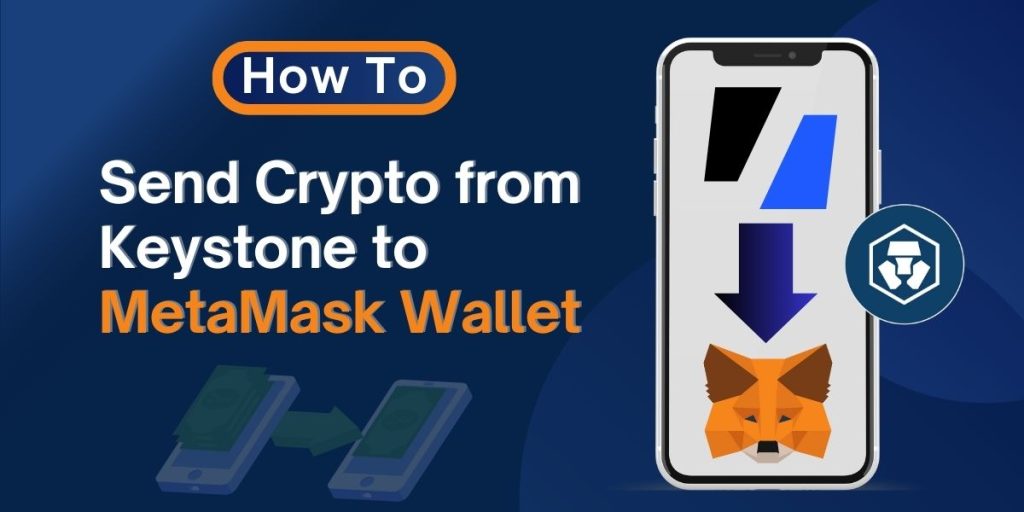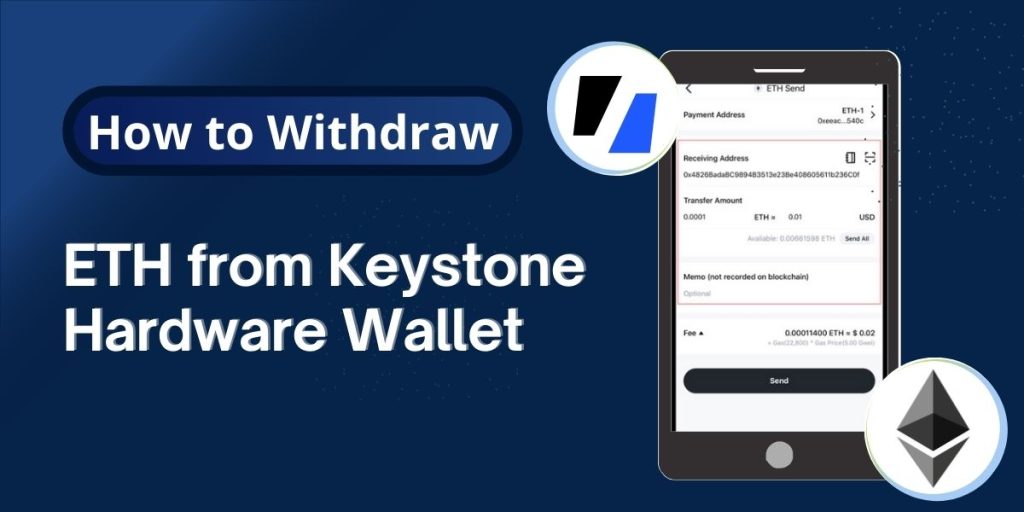Transferring bitcoin from Keystone to Trust Wallet is a straightforward process that allows you to securely move your crypto assets between these two trusted wallets. If you want to transfer bitcoin from Keystone to Trust Wallet, you need to carefully follow the right steps to ensure your bitcoin reaches your Trust Wallet safely and without errors.
In this guide, we’ll walk you through the exact steps to transfer Bitcoin from your Keystone hardware wallet to your Trust Wallet. We’ll also cover what to check before transferring, how to avoid common mistakes, and how to make sure your Bitcoin is safely received.
What You Need Before Transferring Bitcoin
Before you start transferring bitcoin from Keystone to Trust Wallet, make sure you have the following ready:
- Your Keystone hardware wallet is set up with Bitcoin stored on it.
- The Trust Wallet app is installed on your mobile device.
- A stable internet connection.
- Your Trust Wallet bitcoin receiving address (public address).
Having these ready will help you complete the transfer quickly and without interruption.
Steps to Transfer Bitcoin from Keystone to Trust Wallet
Follow these steps to safely transfer Bitcoin from Keystone to Trust Wallet. Each step is designed to be clear and easy to follow.
1: Get Your Trust Wallet Bitcoin Address
- Open the Trust Wallet app on your phone.
- Tap on “Bitcoin” from the list of supported cryptocurrencies.
- Click “Receive” to display your Bitcoin wallet address.
- Copy the address or save the QR code. This is where you’ll send Bitcoin from Keystone.
Tip: Double-check the address to ensure it’s correct. Sending Bitcoin to the wrong address can result in permanent loss.
2: Create a Transaction on Keystone
- On your Keystone device, navigate to the Bitcoin wallet.
- Select “Send” and enter the Trust Wallet Bitcoin address you copied.
- Input the amount of Bitcoin you want to transfer. Leave some for transaction fees.
- Adjust the transaction fee if needed. Higher fees speed up confirmation times.
- Confirm the details. Keystone will generate a QR code with the transaction information.
Note: Keystone signs transactions offline, keeping your private keys secure.
3: Scan the QR Code with Trust Wallet
- In Trust Wallet, go to the “Scan” option (usually under the Bitcoin section).
- Use your phone’s camera to scan the QR code displayed on your Keystone device.
- Trust Wallet will retrieve the transaction details.
This step ensures the transaction data moves securely without connecting Keystone to the internet.
4: Broadcast the Transaction
- In Trust Wallet, review the transaction details, including the amount and recipient address.
- Tap “Send” or “Confirm” to broadcast the transaction to the Bitcoin network.
- Trust Wallet will display a confirmation once the transaction is sent.
The Bitcoin network typically takes 10–30 minutes to confirm the transaction, depending on the fee you set.
5: Verify the Transfer
- Open Trust Wallet and check your Bitcoin balance to confirm the funds arrived.
- You can also use a blockchain explorer (like Blockchain.com) to track the transaction using the transaction ID provided by Trust Wallet.
If the funds don’t appear immediately, wait for network confirmation. Avoid sending duplicate transactions.
Tips to Ensure a Safe Transfer
To make your transfer secure and smooth, follow these best practices:
- Verify Addresses: Always double-check the Trust Wallet address before confirming the transaction.
- Use QR Codes: Scanning QR codes reduces the risk of typing errors.
- Set Appropriate Fees: Higher fees ensure faster confirmation, especially during network congestion.
- Keep Your Seed Phrase Safe: Never share your Keystone or Trust Wallet seed phrase. Store it offline in a secure location.
- Update Software: Ensure both Keystone and Trust Wallet are running the latest versions to avoid compatibility issues.
These tips will help you avoid common pitfalls and keep your Bitcoin safe.
Read also: How to Withdraw ETH from Keystone Hardware Wallet?
Common Mistakes to Avoid
When transferring Bitcoin from Keystone to Trust Wallet, watch out for these errors:
- Sending to the Wrong Address: Always verify the recipient address. Bitcoin transactions are irreversible.
- Insufficient Fees: Low fees can delay or stall your transaction. Check network conditions before sending.
- Ignoring Network Congestion: During busy periods, transactions may take longer. Plan accordingly.
- Exposing Your Seed Phrase: Never enter your seed phrase online or share it with anyone.
Being cautious will save you time and protect your funds. If you experience any issues during the process, the Keystone wallet customer help team can assist with troubleshooting and guidance on transaction errors or device syncing problems.
FAQs About send BTC from Keysotne
What should I do if my Bitcoin doesn’t show up in Trust Wallet?
If your BTC isn’t visible after the transfer, check the transaction ID on the blockchain, confirm the correct receiving address was used, and restart your app. If it’s still missing, reach out to Trust Wallet customer service for further assistance.
How long does it take to transfer Bitcoin from Keystone to Trust Wallet?
The transfer usually takes 10–30 minutes, depending on the Bitcoin network’s congestion and the transaction fee you set. Higher fees can speed up the process.
What happens if I send Bitcoin to the wrong Trust Wallet address?
Bitcoin transactions are irreversible. If you send to the wrong address, the funds are likely lost unless the recipient returns them. Always verify the address.
Do I need to pay fees to transfer Bitcoin?
Yes, there is a network transaction fee required for sending Bitcoin. It’s usually deducted from your sending wallet (Keystone).
Final Thoughts On Sending BTC from Keystone Wallet
Transferring Bitcoin from Keystone to Trust Wallet is a straightforward process that combines the security of hardware wallets with the convenience of mobile wallets. By carefully following the steps above, you can move your BTC safely and efficiently.
Make sure to double-check every detail before confirming a transaction and always keep your wallet recovery phrases secure. If you still have any confusion, you can contact us for instant help.


